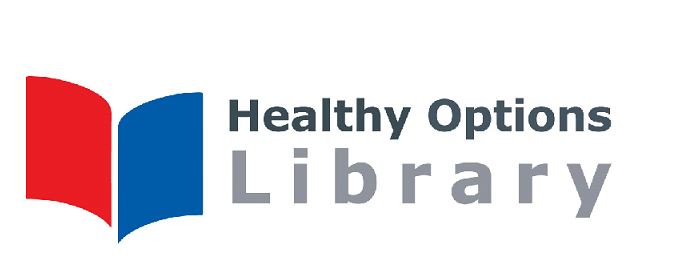Write –
presentations and papers
Addiction 2015 conference
Submit an
abstract for the Addiction conference. The conference will address the
treatment and recovery of alcohol, other drugs and behavioural
addictions and is hosted by the Australian and New Zealand Mental Health
Association. Positions are
available for workshops, oral presentations, poster presentations and
opportunities for peer review. Relevant
topic areas are listed on the website.Submission closing date: 28th January 2015
http://addictionaustralia.org.au/submit-abstract/
Australian
Winter School conference
Call for abstracts is now open. The theme of the 2015
conference is “Unleash Potential”.
Abstracts are welcome on a broad range of alcohol and drug topics,
including prevention, treatment and recovery.
There is a particular focus on innovation and new research. Submission closing date: 23rd January 2015
www.winterschool.info/call-for-abstracts-now-open/
Gibney, P.
B. (2014). Developing and articulating
one’s own practice framework. Psychotherapy
in Australia, 21 (1), 82-91.
Contact the library for access to this article
Livingston, M.
(2014). Socioeconomic differences in
alcohol-related risk-taking behaviours. Drug
and Alcohol Review, 33 (6), 588-595.
Contact the library for access to this article
Attend –
informal learning sessions, journal club, seminars, conferences
Journal club (available to Healthy Options
workers only)
Internal
professional development session held in the library and on the Queensland
teleconference line. January’s session
is presented by When: Thursday, 15th January, 2pm
Addiction Conference
The Addiction conference addresses treatment and recovery of alcohol, other drugs and behavioural addictions. The conference is held at the Gold Coast, Queensland
When: 20th – 22nd May
Registration: Early bird registration until 7th April, 2015
http://addictionaustralia.org.au/
Online–
podcasts, webinars, videos
Pragmatics and pleasures of drug use
Dr. Magdalena Harris speaking at the HIT
Hot Topics conference in Liverpool. She talks about measures to make harm
reduction interventions effective & the essential need to acknowledge the
pragmatics & the pleasures of drug use, and not to focus only on risks
& harmshttps://www.youtube.com/watch?v=jDpSuFkxAOo&list=UUeHbriRIjC2pgUPt8HKp0tQ
Talking
about sex
Talking
about sex. The question is - do we? Rosalyn Dischiavo throws some light on the
subject in this podcast.Rosalyn Dischiavo is the founder of the Institute for Sexuality Education and Enlightenment (ISEE), a holistic sex education school in Hartford, Connecticut, U.S.A. She is a professor, marriage and family therapist, and sexuality educator with a Master of Arts in Marriage and Family Therapy and a Doctor of Education in Human Sexuality. Roz has been presenting webinars, retreats, workshops and lectures on topics related to wellness, spirituality, sex and gender issues for over 25 years. Her style is engaging. A former radio personality, she uses humour and insight to dynamically engage participants in a meaningful and unique dialog about sexuality and other wellness-related topics.
http://www.podsocs.com/podcast/talking-about-sex/
Assessed
learning – short courses, certificates, diplomas, bachelors, post-grad
Graduate Certificate in Alcohol, Tobacco and Other Drug Studies – University of Queensland
Within the field of Public Health, alcohol, tobacco and other drug use are associated with a significant burden of illness and injury in populations around the globe. In addition, individuals, families and communities experience adverse social harms arising from specific patterns of intoxication, modes of drug use and illicit drug markets. The majority of courses listed in this program are offered externally only.
To enrol, a student must hold an undergraduate degree in a related field or a combination or tertiary study and relevant work experience.
Application closing date: 31st January, 2015 (For semester 1 entry)
http://www.uq.edu.au/study/program.html?acad_prog=5508
Graduate Certificate of Alcohol and Drug
Studies – University of Southern Queensland
Are you a
doctor, nurse, psychologist or allied health professional looking to acquire
practical skills that will help you respond to substance abuse in a range of
health settings? Well the Graduate Certificate of Alcohol and Drug Studies is
designed for those of you wanting to assess substance misuse, undertake
motivational interviewing and assist people through relapse prevention. Designed
in conjunction with Queensland Health’s Alcohol and Drug Training and Resource Unit,
the award-winning program also provides an introduction to psychoactive drugs. Don’t live near a USQ campus? Don’t worry. Delivered entirely online, the innovative degree is offered full-time or part-time to meet the competing demands of busy health professionals. Live in Brisbane or Birdsville? Work in nursing or mental health? The assessment schemes will offer opportunities to development knowledge and skills pertinent to your practice specialisation.
Application closing date: 26th February, 2015 (For semester 1 entry)
http://www.usq.edu.au/study/degrees/graduate-certificate-of-alcohol-and-drug-studies
Please feel free to share other opportunities in the comments section.






































